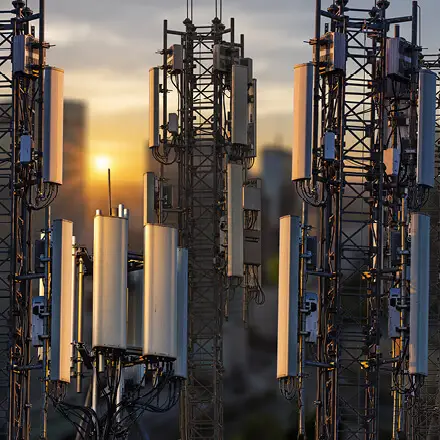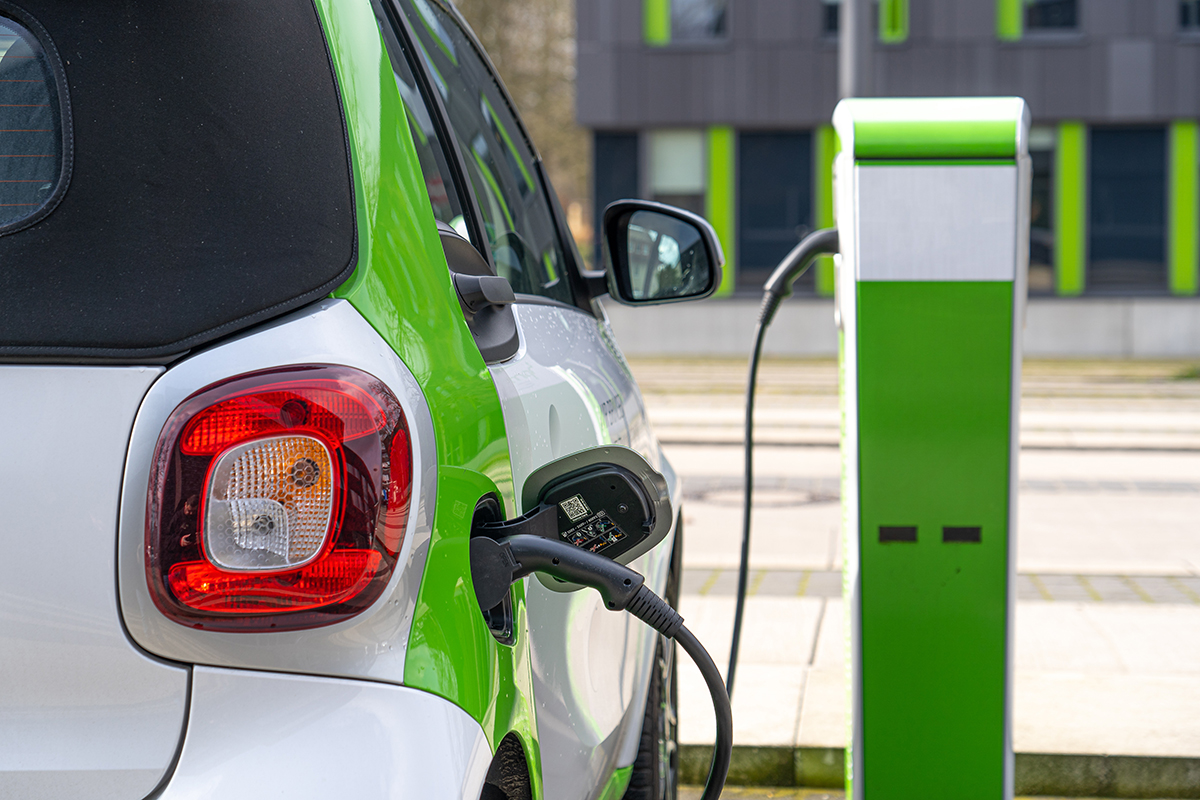Veröffentlicht am 5. August 2021
Wie gut sind E-Autos wirklich?
E-Autos gelten als saubere Alternative zu Verbrenner-Motoren. Mit der Förderung von Elektroautos wollen die Regierungen in Europa die CO2-Emission senken und damit die Vorgaben des Pariser Klimaabkommens erfüllen. Allerdings haben E-Autos durchaus Nachteile und ethische Makel.
Eine Million Elektro-Autos fahren über Deutschlands Straßen, bis 2030 sollen es 14 Millionen sein. Um diese ambitionierten Ziele zu erreichen, fördert die Bundesregierung jeden Kauf eines neuen E-Autos. Auch andere Regierungen in Europa zeigen sich immer klima- und umweltbewusster und treiben die Produktion von Elektrofahrzeugen voran. E-Mobilität ist ein Zukunftsmarkt, da will jeder mitmischen.

Es scheint auch so einfach: Die Elektrofahrzeuge stoßen deutlich weniger CO2 aus und werden mit Ökostrom aus Sonnen- und Windenergie aufgeladen. Null Emission lautet das Ziel. Ist das möglich? Ganz und gar nicht. Der Großteil unseres Stroms wird immer noch aus Kohle, Gas und Erdöl gewonnen – den Hauptverursachern des gesamten CO2-Ausstoßes.
Hinzukommt, dass gerade E-Autos besonders viel Strom benötigen. Nicht nur zum Laden der Batterie, sondern vor allem in der Herstellung von Elektrofahrzeugen werden Unmengen an Strom verbraucht. Das treibt sowohl den Stromverbrauch als auch die CO2-Bilanz deutlich nach oben. Allein die Produktion der Batterie verursacht etwa ein Drittel der Emission sämtlicher schädlicher Klimagase wie CO2.
Von den weitaus größeren Umwelt- und Klimaschäden, die mit der E-Auto-Produktion einhergehen, ist in Europa wenig zu sehen. Länder in Südamerika, Asien und Afrika betrifft es dafür umso mehr. Für die Herstellung der Lithium-Ionen-Batterien werden enorme Mengen an Rohstoffen benötigt, allen voran Lithium. Fünf bis acht Kilogramm Lithium stecken in einem Mittelklasse-E-Auto.
Neben Lithium stecken noch weitere Rohstoffe wie Neodym, Kobalt und Graphit in einem Elektrofahrzeug. Obwohl diese Rohstoffe zu den sogenannten Seltenen Erden oder Seltenerdmetallen gehören, sind sie gar nicht so selten – jedenfalls noch nicht, denn der Bedarf an diesen Rohstoffen wächst rasant. Der Abbau von Lithium ist innerhalb von zehn Jahren um das Vierfache gestiegen. Selbst, wenn die Bezeichnung „Seltene Erden“ erst einmal irreführend ist, bedeutet der Abbau dieser Rohstoffe einen enormen Raubbau an der Natur – mit verheerenden Auswirkungen auf Umwelt, Klima und Mensch.

Lithium und andere Rohstoffe werden oft unter schlimmsten Arbeitsbedingungen abgebaut. Besonders brisant ist Kobalt, das auch für die Produktion von Smartphone-Displays benötigt wird. Kobalt wird hauptsächlich aus dem Kongo importiert. Hier kommt es in den Kobalt-Minen oft zu Unfällen, auch, weil es an Schutzausrüstung fehlt. Oft sind es Kinder, die in den Minen arbeiten.
Auf der anderen Seite der Welt, in China, wird Graphit unter besonders gesundheitsschädlichen Bedingungen abgebaut. Häufig wird beim Abbau auch mit Säuren gearbeitet, die die Metalle aus den Bohrlöchern waschen. Chemische Abfallprodukte und giftige Abwässer gelangen in das Grundwasser. Meist ist der Abbau auch mit einem enormen Wasserverbrauch verbunden. In Chile beispielsweise, wo Lithium aus Salzseen gewonnen wird, verdunsten Millionen Liter Wasser. Das Grundwasser wird knapp, Wüsten entstehen.
Die Liste ließe sich noch fortsetzen. Klar ist: Es ist grundsätzlich ein guter Gedanke, mit E-Mobilität den CO2-Verbrauch zu senken und damit Klima und Umwelt zu schützen. Allerdings ist der Gedanke bei Weitem nicht zu Ende gedacht. Im Moment ist die Produktion von E-Autos mit extrem schädlichen Auswirkungen auf das Klima, die Umwelt und sogar den Menschen verbunden. Es ist kontraproduktiv, in Europa auf E-Mobilität zu setzen, solange dadurch der CO2-Ausstoß indirekt erhöht und durch den Rohstoffabbau die Umwelt zerstört wird.
Ein weiterer Aspekt des E-Autos bleibt häufig unbeachtet. Mit bis zu 8.000 Meter Kabel, um die 100 elektrischen und elektronischen Komponenten und Akkus mit einer Leistung von bis zu 100 Kilowatt ist das E-Auto eine Quelle elektromagnetischer Strahlung. Auf kleinstem Raum ist das eine enorme Strahlenbelastung für den Fahrer und die Insassen.
Und mit jedem weiteren elektrischen Bauteil steigt auch die Strahlung. Auch Diesel- und Benzinfahrzeuge sind fahrende Hightech-Stationen, in denen Fahrer und Insassen rund um die Uhr dem Elektrosmog ausgesetzt sind. Oft verbinden wir Smartphone, Headset und die Multimedia-Anlage des Autos miteinander, damit wir die Zeit während der Fahrt nutzen können. Das ist praktisch und bequem, aber immer mehr Menschen merken die Belastung durch Elektrosmog. Sie fühlen sich selbst bei kurzen Fahrten unwohl. Viele, die länger mit dem Auto unterwegs sind, werden schnell müde und bekommen Kopfschmerzen.
Mehr zu den Auswirkungen der Strahlung im Auto:
Eine Million Elektro-Autos fahren über Deutschlands Straßen, bis 2030 sollen es 14 Millionen sein. Um diese ambitionierten Ziele zu erreichen, fördert die Bundesregierung jeden Kauf eines neuen E-Autos. Auch andere Regierungen in Europa zeigen sich immer klima- und umweltbewusster und treiben die Produktion von Elektrofahrzeugen voran. E-Mobilität ist ein Zukunftsmarkt, da will jeder mitmischen.
Erhöhter Stromverbrauch und CO2-Ausstoß

Es scheint auch so einfach: Die Elektrofahrzeuge stoßen deutlich weniger CO2 aus und werden mit Ökostrom aus Sonnen- und Windenergie aufgeladen. Null Emission lautet das Ziel. Ist das möglich? Ganz und gar nicht. Der Großteil unseres Stroms wird immer noch aus Kohle, Gas und Erdöl gewonnen – den Hauptverursachern des gesamten CO2-Ausstoßes.
Hinzukommt, dass gerade E-Autos besonders viel Strom benötigen. Nicht nur zum Laden der Batterie, sondern vor allem in der Herstellung von Elektrofahrzeugen werden Unmengen an Strom verbraucht. Das treibt sowohl den Stromverbrauch als auch die CO2-Bilanz deutlich nach oben. Allein die Produktion der Batterie verursacht etwa ein Drittel der Emission sämtlicher schädlicher Klimagase wie CO2.
Auswirkungen auf Umwelt, Klima und Mensch
Von den weitaus größeren Umwelt- und Klimaschäden, die mit der E-Auto-Produktion einhergehen, ist in Europa wenig zu sehen. Länder in Südamerika, Asien und Afrika betrifft es dafür umso mehr. Für die Herstellung der Lithium-Ionen-Batterien werden enorme Mengen an Rohstoffen benötigt, allen voran Lithium. Fünf bis acht Kilogramm Lithium stecken in einem Mittelklasse-E-Auto.
Neben Lithium stecken noch weitere Rohstoffe wie Neodym, Kobalt und Graphit in einem Elektrofahrzeug. Obwohl diese Rohstoffe zu den sogenannten Seltenen Erden oder Seltenerdmetallen gehören, sind sie gar nicht so selten – jedenfalls noch nicht, denn der Bedarf an diesen Rohstoffen wächst rasant. Der Abbau von Lithium ist innerhalb von zehn Jahren um das Vierfache gestiegen. Selbst, wenn die Bezeichnung „Seltene Erden“ erst einmal irreführend ist, bedeutet der Abbau dieser Rohstoffe einen enormen Raubbau an der Natur – mit verheerenden Auswirkungen auf Umwelt, Klima und Mensch.

Lithium und andere Rohstoffe werden oft unter schlimmsten Arbeitsbedingungen abgebaut. Besonders brisant ist Kobalt, das auch für die Produktion von Smartphone-Displays benötigt wird. Kobalt wird hauptsächlich aus dem Kongo importiert. Hier kommt es in den Kobalt-Minen oft zu Unfällen, auch, weil es an Schutzausrüstung fehlt. Oft sind es Kinder, die in den Minen arbeiten.
Auf der anderen Seite der Welt, in China, wird Graphit unter besonders gesundheitsschädlichen Bedingungen abgebaut. Häufig wird beim Abbau auch mit Säuren gearbeitet, die die Metalle aus den Bohrlöchern waschen. Chemische Abfallprodukte und giftige Abwässer gelangen in das Grundwasser. Meist ist der Abbau auch mit einem enormen Wasserverbrauch verbunden. In Chile beispielsweise, wo Lithium aus Salzseen gewonnen wird, verdunsten Millionen Liter Wasser. Das Grundwasser wird knapp, Wüsten entstehen.
Die Liste ließe sich noch fortsetzen. Klar ist: Es ist grundsätzlich ein guter Gedanke, mit E-Mobilität den CO2-Verbrauch zu senken und damit Klima und Umwelt zu schützen. Allerdings ist der Gedanke bei Weitem nicht zu Ende gedacht. Im Moment ist die Produktion von E-Autos mit extrem schädlichen Auswirkungen auf das Klima, die Umwelt und sogar den Menschen verbunden. Es ist kontraproduktiv, in Europa auf E-Mobilität zu setzen, solange dadurch der CO2-Ausstoß indirekt erhöht und durch den Rohstoffabbau die Umwelt zerstört wird.
Erhöhte Belastung mit Elektrosmog
Ein weiterer Aspekt des E-Autos bleibt häufig unbeachtet. Mit bis zu 8.000 Meter Kabel, um die 100 elektrischen und elektronischen Komponenten und Akkus mit einer Leistung von bis zu 100 Kilowatt ist das E-Auto eine Quelle elektromagnetischer Strahlung. Auf kleinstem Raum ist das eine enorme Strahlenbelastung für den Fahrer und die Insassen.
Und mit jedem weiteren elektrischen Bauteil steigt auch die Strahlung. Auch Diesel- und Benzinfahrzeuge sind fahrende Hightech-Stationen, in denen Fahrer und Insassen rund um die Uhr dem Elektrosmog ausgesetzt sind. Oft verbinden wir Smartphone, Headset und die Multimedia-Anlage des Autos miteinander, damit wir die Zeit während der Fahrt nutzen können. Das ist praktisch und bequem, aber immer mehr Menschen merken die Belastung durch Elektrosmog. Sie fühlen sich selbst bei kurzen Fahrten unwohl. Viele, die länger mit dem Auto unterwegs sind, werden schnell müde und bekommen Kopfschmerzen.
Mehr zu den Auswirkungen der Strahlung im Auto:
Ob E-Auto, Hybrid, Benziner oder Diesel: Die memon Technologie ist in der Lage, die schädlichen Auswirkungen der Strahlenbelastung zu neutralisieren und Fahrer und Insassen vor Elektrosmog zu schützen. Und: je weniger technische Sonderausstattung, desto geringer ist die Strahlenbelastung im Auto. Daher sollte sich jeder überlegen, was er im Auto wirklich braucht und worauf er verzichten kann.
Mehr erfahren
Mehr erfahren











